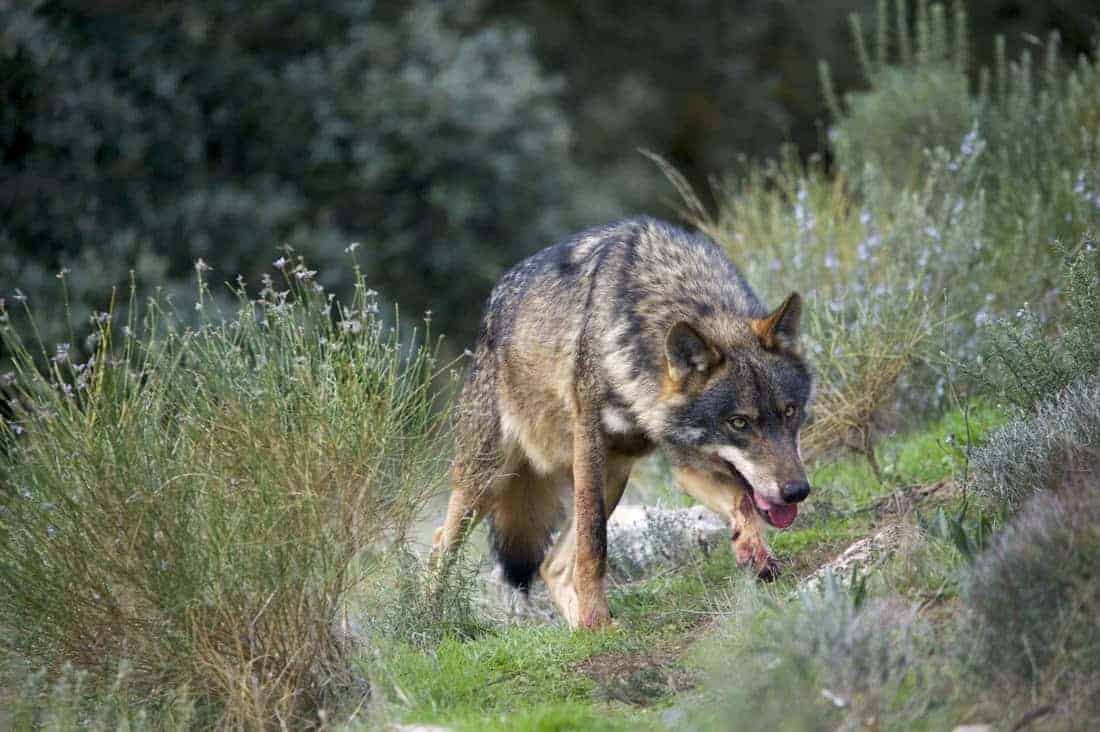Witnessing Europe’s largest population explosion
Many people are still unfamiliar with the animal. It looks like a big fox or a small wolf, with a slightly different colour palette. A species that normally only lives in South-Eastern Europe, but is exploring new countries rapidly. Another wild animal to which people have to get used. We are talking of course about the golden jackal.
Please also read: Get ready for the golden jackal
An exotic visitor
The golden jackal (Canis aureus) is a member of the canid family, related to dogs, foxes and wolves. Other relatives include the coyote and different jackal species in other continents. For a long time, the golden jackal resided only in the warmer regions of Europe, in the southeast. But in the last couple of decades, the population of golden jackal has rapidly grown and expanded. Scientists even claim that it is the biggest ‘explosion’ of an animal population in Europe at this time. So what is a golden jackal, and why is its population growing so rapidly?
Going back to the first half of the 20th century, we find the golden jackal population concentrated in the Balkans, all the way up to the Anatolia and Caucasus region. Earlier historic data is scarce, as the animal was not interesting to humans, and thus not hunted. The main populations settled in Hungary, Croatia, Greece, Bulgaria and Turkey. Occasionally, during good conditions, the population expanded towards Bulgaria and Serbia.
Population dynamics
In the mid 20th century, the 1950’s to 1960’s, the golden jackal population shrunk drastically. Scientists suspect that the loss of habitat, as well as poisoned bait was the main cause for it. At its lowest point, there were only small subpopulations left, dispersed across the Balkans. They became the four so-called core populations:
- Coastal Bulgaria and Turkey
- Adriatic region
- Strimon-Chalkidiki region
- Poloponnese region
As poisoned bait was banned and species protection installed in Bulgaria, the golden jackal population started to grow again in the 1970’s. The most powerful expansion came from the core population on coastal Bulgaria and Turkey. Quickly, the population expanded into Bulgaria, Serbia and making its way to Hungary. And the expansion did not stop there.
Factors providing a free way
Bulgaria made poisoned bait illegal and installed a temporary protection status on the golden jackal in 1962. Furthermore, hunting in Bulgaria flourished, leaving behind game carcasses as food source for the golden jackals. Meanwhile, free ranging sheep that died provided extra food sources for scavenging. This led to an abundance of food for golden jackals. Suitable habitats were the next thing to focus on.
Intensive plantations of commercial forests created a mosaic landscape. Agricultural lands, forests and shrubs alternated across the South-Eastern European landscape, an optimal habitat for golden jackals. And important to note, the biggest threat to golden jackals practically disappeared: the wolf.
Population explosion without an end?
All these factors enabled the golden jackal population to continue to expand. Individuals appeared in Italy and Austria in the late 80’s. In the past years, individuals even made it to the Switzerland, Netherlands, France, Denmark and the Baltic States.
So, can we expect that the golden jackal population simply continues to grow as it does? Not really. Golden jackals avoid areas with seasonal deep snow, extreme low temperatures, large forests, and steep mountains. Also, it tries to avoid conflicts with wolves, which population is also slowly growing.
Where to find them?
The recent study on the golden jackal population in Europe gives us a clue where we can expect the golden jackals to go. Notably, most of the golden jackals live below an altitude of 500 meters, within 2km distance of water. The majority of monitored golden jackals lived in agricultural and mixed habitats, less in woodlands. Additionally, two thirds of the individuals lived outside of wolf territories.
Encountering a golden jackal is more likely than encountering a wolf. A part of the golden jackals live close (less than 1km) to human villages with less than 1000 inhabitants. From bigger villages, golden jackals tend to stay further away.
Nevertheless, people should become aware that the golden jackal is making a rapid return across Europe. The latest estimations state that there are 117 000 individuals already. Fortunately, people do not need to fear the golden jackal. It only hunts for small prey, and scavenges on bigger carcasses and human trash that it finds. Find more details and reasons for the golden jackal population explosion in the full article, available below.









